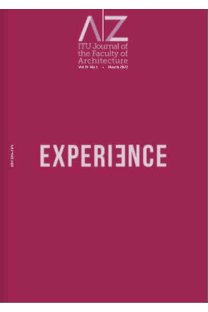Vernacular architecture as an alternative design approach with interpretation of Paul Ricoeur’s critical theory
___
Kaplan, David M. (2003). Ricoeurs Critical Theory, State University of New York Press, Albany, USABest, Kathryn. (2006). Design Management, Managing Design Strategy, Process, and Implementation, AWA Publishing SA, Thames Hudson, Singapore.
Gollings, John. (1998). Fondazione Renzo Piano. http://www.fondazionerenzopiano.org/project/85/jean-marie-tjibaou-cultural-center/genesis/, Accessed August 2014
Hidayatun, Maria I. (2003). Belajar Arsitektur Nusantara dari Gerja Puhsarang, Kediri, Tinjauan Ke-Bineka Tunggal Ika-an. Simposiun Internasional Ielajah Arsitektur Nusantara (Si-IAN)
Lokakarya Nasional, 11 Desember 2003. Brastagi Tanah Karo, Medan, Indonesia, B2.B1-1-16
Hidayatun, Maria I, et all. (2013).
Nilai-Nilai Kesetempatan dan Kesemestaan dalam Regionalisme Arsitektur di Indonesia, Proceeding Seminar Nasional SCAN#4 “Stone, Steel and Straw” Univ. Atmajaya, 17 Mei 2013, Yogyakarta, Indonesia, 11.208-213
Kim, Goodwin. (2006). Designing for the Digital Age: How to Create Human-Centered Products and Services, Wiley Publishing, Inc., Indianapolis, Indiana.
Lawrence, Roderick ]. (2006). Learning from the Vernacular, in Lindsay Asquith and Marcel Vellinga (ed.)
Vernacular Architecture in the Twenty-First Century: Theory, education, and practice, Taylor Francis, Madison, New York.
Mangunwijaya. (2013). Wastu Citra, PT. Gramedia, Jakarta, Indonesia Murphy, Bernice. (2002). Centre Culturel Tjibaou museum and arts centre redefining NewCaledonia’s cultural future, Humanities Research Vol. IX, No. 1, 2002
Oxford dictionary, http://WWW. askoxford. com/concise_oed/design?- view=uk, Accesed 15 Agust 2014
Ozkan, Suha. (2006). Traditional ism and Vernacular Architecture in the Twenty-First Century, in Lindsay Asquith and Marcel Vellinga (ed.)
Vernacular Architecture in the Twenty-First Century: Theory, education, and practice, Taylor Francis, Madison, New York.
Ricoeur, Paul. (1985). Time and Narrative, vol II, University of Chicago Press. Chicago.
Rudofsky, Bernard. (1987). Architecture Without Architects: Short Introduction to Non-Pedigreed Architecture, the University of New Mexico Press Edition, New York, AS
Scholte, Ian Aart. (2005). Globalization: Critical Introduction, Palgrave Macmillan, Houndmills, Basingstoke, New York.
Silloway, Kari. (2004). http://www. galinsky.com/buildings/tjibaou/ Accessed August 2014.
Story Jean-Marie Tjibaou Cultural Center, (1998). http://www.fondazionerenzopiano. org/project/85/ jean-marie-tjibaou-cultural-center/ genesis/, Accessed August 2014
Vasal, PH. William. (1998). Renzo Piano Building Workshop, http://www. rpbw. com/project/41/jean-marie-tjibaou-cultural-center/, Accessed 15 August 2014
- ISSN: 2564-7474
- Yayın Aralığı: 3
- Başlangıç: 2005
- Yayıncı: İTÜ Rektörlüğü
Energy efficient lighting system retrofit for retail environments
A critical review of ornament in contemporary architectural theory and practice
Urban planning approaches in divided cities
Vernacular to modern in the search of sustainable development
Shikha PATIDAR, Brishbhanlali RAGHUWANSHI
Incremental housing: A participation process solution for informal housing
Relationship between place attachment and user satisfaction at some national parks in Turkey
Pınar SIVALIOĞLU, AYŞE LALE BERKÖZ
Structural transformations of traditional architecture from Hittites to Ottomans in Bogazkoy
Urban regulations in 18th century Istanbul: Natural disasters and public dispute
